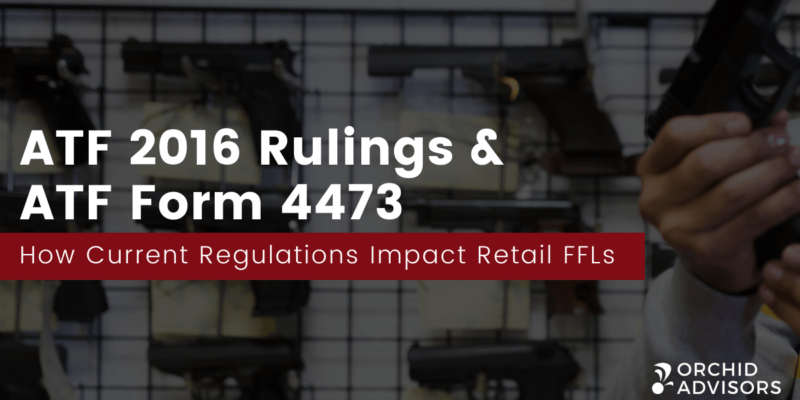ATF Ruling 2016-1 and ATF Ruling 2016-2
These two ATF Rulings were published in 2016 and addresses matters pertaining to cloud-based electronic bound books applicable to retail gun stores, firearm manufacturers and other licensees. In addition, ATF Ruling 2016-2 addresses the use of an electronic 4473 and digital signatures, two topics which are of importance to the modern gun store. Let’s examine each Ruling in greater detail as it relates to Type 01 FFLs. ATF Ruling 2016-1 permits the use of cloud-based record keeping provided that 10+ requirements are met by the licensee. The following are the three most frequent questions that gun store owners as our team: What is the Difference Between ATF Ruling 2013-5 and 2016-1? ATF Ruling 2013-5 permitted the use of electronic record keeping but did not address cloud-based record keeping. 2016-1 is specific to the use of internet-based storage of the licensee’s record. Keep in mind that ATF rarely, if ever, dictates the type or nature of the software itself and focuses more on meeting specific performance requirement that aid ATF inspections and maintains the quality and long-term access to records. For that reason, the Ruling doesn’t address the nature of the software itself nor its processing capability. Am I Required to Back up My Records Daily? Yes. Whereas ATF Ruling 2013-5 required backup every six months, ATF Ruling 2016-1 requires the licensee to back up the records generated and held in the cloud to locally held services on a daily basis. The intent is twofold, if not more. (1) The records need to be readily available at the licensee’s premise to support an inspection. Failure to access the cloud to obtain the records would not be permissible. (2) As a means of extra security and safe keeping of the records. Can I Make Corrections to My Records? Yes. However, the ATF is very clear as to the methods in which both electronic and cloud-based records are to be corrected. In layman speak – you cannot delete or “write over” the prior transaction. While the detailed methods are prescribed in the ruling, the commonsense understanding is that your electronic Bound Book software must retain the original record as well as the new and provide a change log. ATF Ruling 2016-2 permits the use of electronic 4473 forms and the use of digital signatures. Of the hundreds of retailers served by the Orchid team, the most asked question relates to the use of digital signatures on ATF Form 4473. What Are the Permissible Tools for Generating an Electronic Signature? ATF specifies the appropriate tool to be that of a “signature pad.” However, after numerous conversations with ATF personnel we, and others in the industry have come to understand the Ruling specified a method more than an actual tool. To clarify, there are actual pieces of hardware used by retailers called a “signature pad” but the intent was to specify the means in which a signature is digitally captured. In summary, licensees may use an actual signature pad, a mouse, a touch screen monitor or other device provided that the signature is legible, is retained and mirrors that of a printed signature but in electronic form. ATF Form 4473, 2020 Edition Finally, it is imperative that we close with a discussion on the revised ATF Form 4473 which was made effective on November 1, 2020. It has had significant impact to the industry in that both gun stores and software vendors alike were forced to change their processes and applications. Moreover, this meant retraining employees and carefully managing the transition of in-process forms to the new format. If you’re a Type 01 licensee and operating a compliant gun store than by now you should have made the switch. Yes, we’ve heard some horror stories where FFL software vendors failed to create a working version of the new form, or at least in time for the November 1 date. Regardless of your method, paper or electronic, take note that the new form does increase your compliance risk, at least for a period of time. We advise that you advise a mid-level store manager to carefully review your internal audit routines and offer a second set of eyes, reviewing completed Form 4473 as you make your way through the balance of the transition.Ready to Learn More About Orchid’s Expanded Offerings? Contact Us Today.







0 Comments